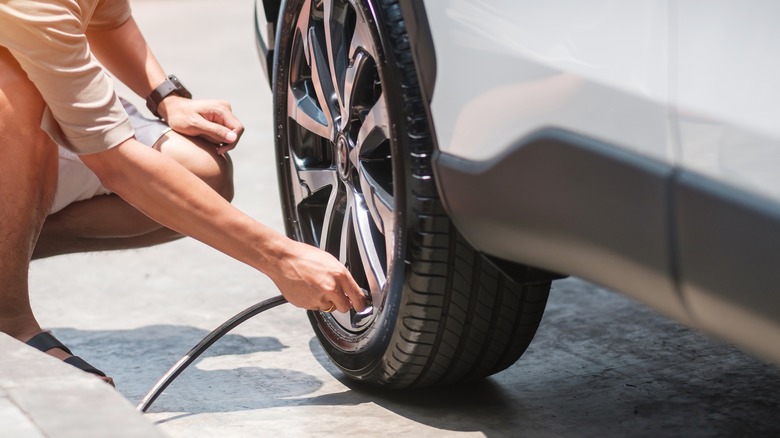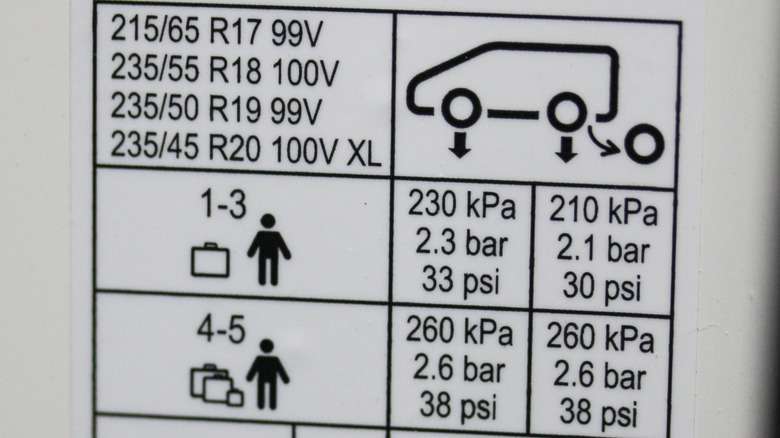How To Know What Your Vehicle's Tire Pressure Should Be
People tend not to think about tire pressure until their car's tire pressure light comes on, which usually alters their plans that day. But poor tire pressure is about more than the tire noticeably drooping, as a tire not filled to the proper pressure is one of the terrible habits that can slash your tire's life. It can wear the rubber out faster, lower gas mileage, and negatively impact handling. So it's ideal to avoid all that by keeping the tires at the recommended tire pressure level.
This isn't a fact most car owners have memorized like the make and model, but the pounds per square inch (psi) measurement can easily be found on a sticker inside the driver's door (usually on newer cars), and if not, is always in the owner's manual. Determining that tire pressure will require a tire pressure gauge, which is available at most service stations or auto parts stores. The rapid friction and heat from driving will impact the measurement, so it's best to wait until the tires are cold, like first thing in the morning, or at least three hours after you've been driving.
Adjusting the tire pressure
Checking the tire pressure with the gauge is much simpler than remembering to do it. After removing the cap from the air valve, it's best before doing anything else to place it somewhere secure, as any driver knows they tend to roll far away in the slightest gust of wind. You then place the air pressure gauge against the stem, knowing you've done it properly when you hear that soothing sound of hissing air. Both a manual or digital tire pressure gauge will do the trick. On the manual, a dial will typically point to the number, and a digital one will just display it. Once you compare it to what's recommended, you'll obviously need to either release some air or add some in, unless it's one of those rare, fortunate times in which the pressure is right on.
To fill, place the nozzle from the air compressor on the tire valve stem, which may flow automatically upon insertion, or require pulling a lever, but in either case, you know it's working when you hear the air flowing. Getting it to the exact recommended air pressure is tough on the first try, so keep checking the pressure until it lines up. If the tire needs to be deflated instead, you can press the small dot on the back of the tire pressure gauge into the valve stem pin, or instead press on it with a screwdriver, at which point you'll hear air coming out. It's a process that takes less time than one thinks and you should actually check your car's tire pressure once per month, which will eventually cause you to know your recommended psi by heart.

